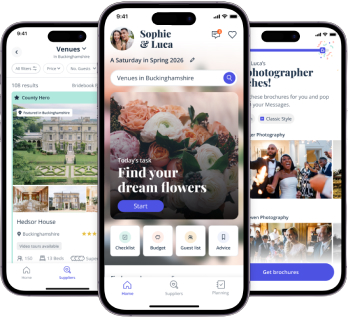How to Create a Wedding Seating Plan: Etiquette & Top Tips

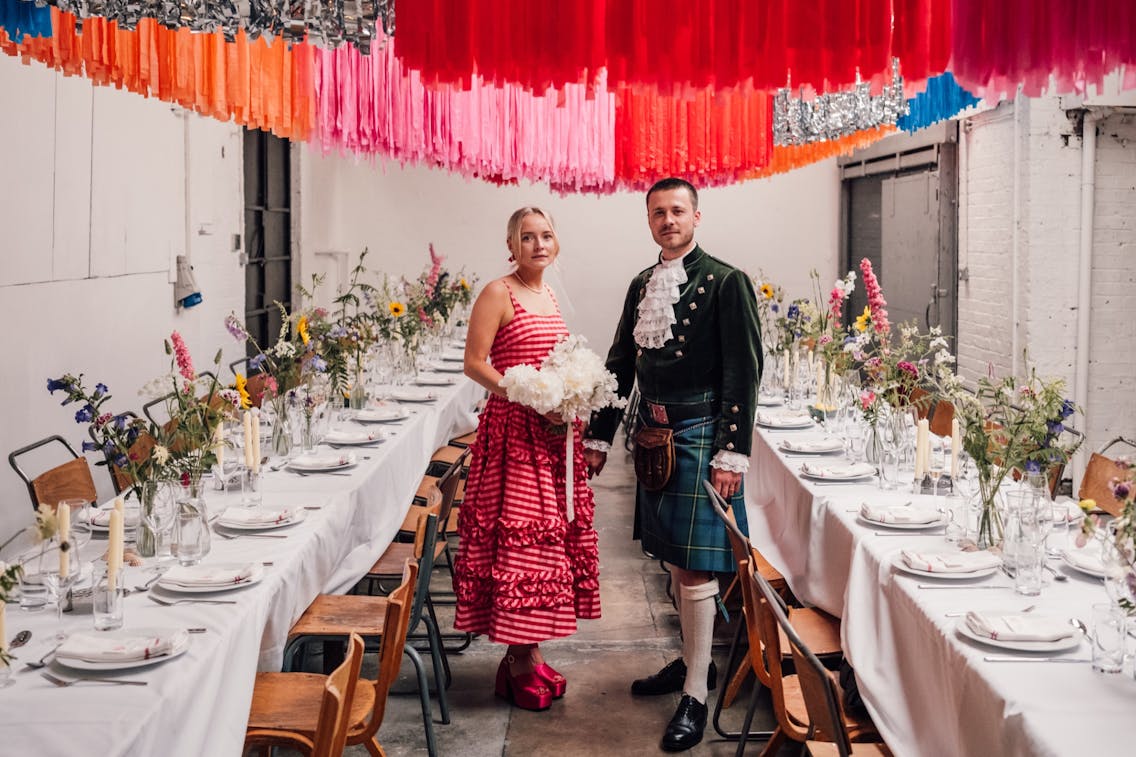
Creating a wedding seating plan may seem simple at first glance. But, then you remember Auntie Jane has fallen out with Uncle Jim, Cousin Louis has sprained his ankle in football training, and your uni mates are notorious for their loud banter. Suddenly, it seems like you need a degree in diplomacy to get everyone seated just right.
Don’t stress! Crafting the perfect seating arrangement is a blend of strategic planning and thoughtful consideration, and we’re here to guide you through. Here’s a handy post to help you navigate the process and ensure everyone enjoys their time at your wedding!
What is a wedding seating plan?
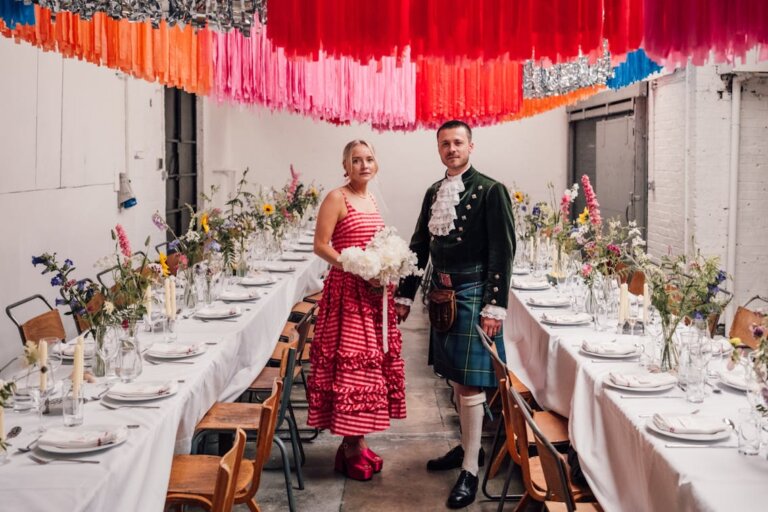
A wedding seating plan is a chart that explains where everyone will sit at a wedding reception. It’s usually presented on a board or frame near the entrance of the reception area and helps guests easily find their seats.
The seating plan should include table numbers, the layout of tables (including the top table), and the names of guests assigned to each table. Planning and presenting a wedding seating plan will help guests find their seats easily and make sure there are no hold ups to serving the wedding breakfast.
Try to be strategic in how you create your wedding seating plan. For example, there’s no point sitting two people that don’t get along next to each other — it’ll only make things awkward! Equally, sitting two very shy people next to each other isn’t a great idea either. Try mixing up the seating plans by balancing outgoing guests with quieter ones to keep conversations lively and comfortable.
Before creating your wedding seating plan
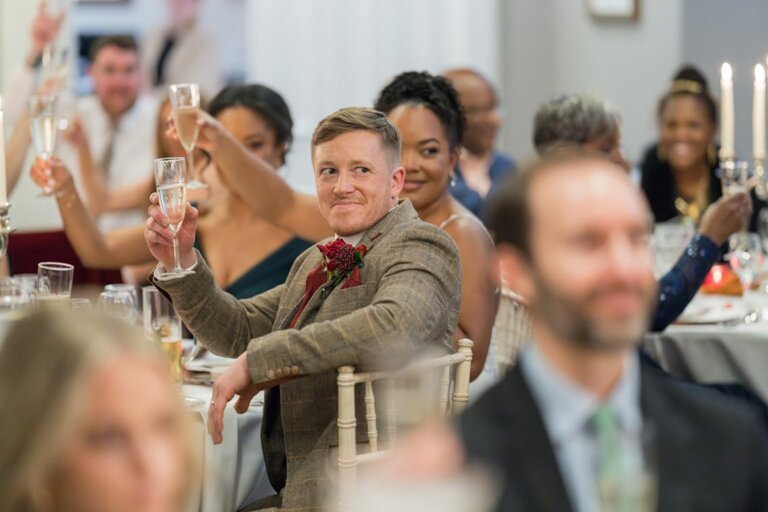
There are a few things you need to consider before creating your perfect wedding seating plan. Here are three simple steps to tick off first.
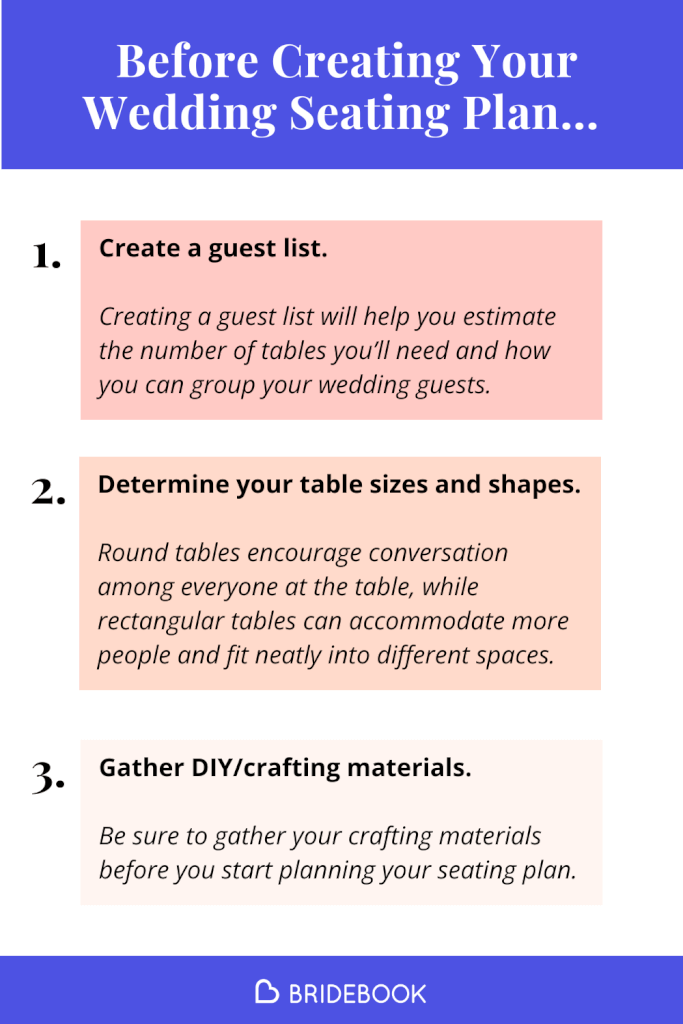
1) Create a guest list
You’ll need a guest list of everyone you intend to invite before you begin planning your wedding seating plan. It’s best if people RSVP to the wedding first. However, if you’re starting early, creating a guest list will help you estimate the number of tables you’ll need and how you can group your wedding guests. For example, do you want to seat people by friendship groups, families, or have a complete mix?
2) Determine your table sizes and shapes
Table size and shape will play a big role in how you arrange your seating plan. Round tables encourage conversation among everyone at the table, while rectangular tables can accommodate more people and fit neatly into different spaces. Knowing your table dimensions will help you plan how many guests can comfortably sit at each table and how to arrange them in the venue.
You’ll also need to consider the size of your venue and the shape of the reception room. Make sure there’s enough space for guests to move around easily, especially for the hospitality team to serve and for people to get up and dance. You should also consider whether wheelchair users or disabled guests will be able to manoeuvre through the gaps. They may need a little more space than others, a clear path to the toilet, or other adjustments to their seating. Keep things inclusive by asking these guests what they need ahead of time and accommodating any adjustments.
The room layout should also take into account any focal points of the evening. For example, the dance floor, stage, or cake table. If you’re struggling to piece it together based on the shape of the room, reach out to the venue staff to see what they recommend or what other guests have done.
3) Gather DIY/crafting materials
There are a ton of different DIY wedding seating plans you can create, and it’s a good idea to gather your crafting materials before you start planning your seating plan. This will ensure you have everything you need on hand and can dive right into the creative process without any interruptions.
Think about grabbing some felt tips, sticky notes, and maybe even some pretty ribbons or stickers to add a personal touch. Having all your materials ready will make the whole process smoother and a lot more fun. If you’re looking for inspiration, check out our top wedding seating plan ideas.
Creating the perfect wedding seating plan
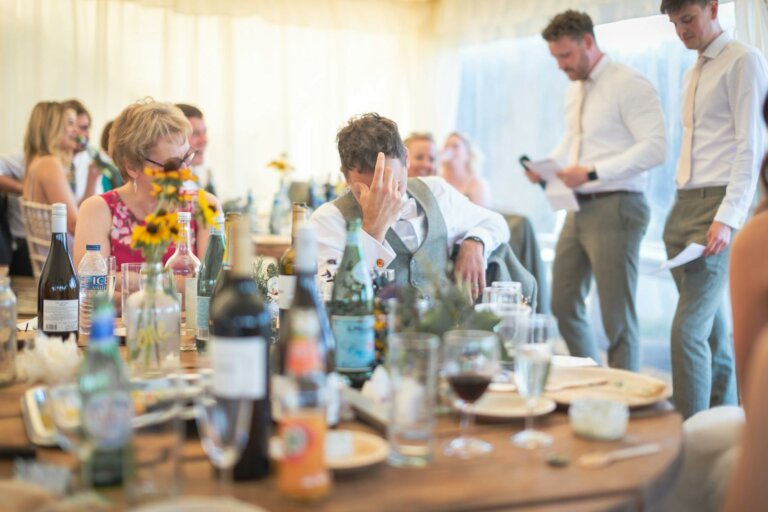
Ready to start your wedding table plan? Here’s a list of all the things you’ll need to consider. Follow our step-by-step guide below.
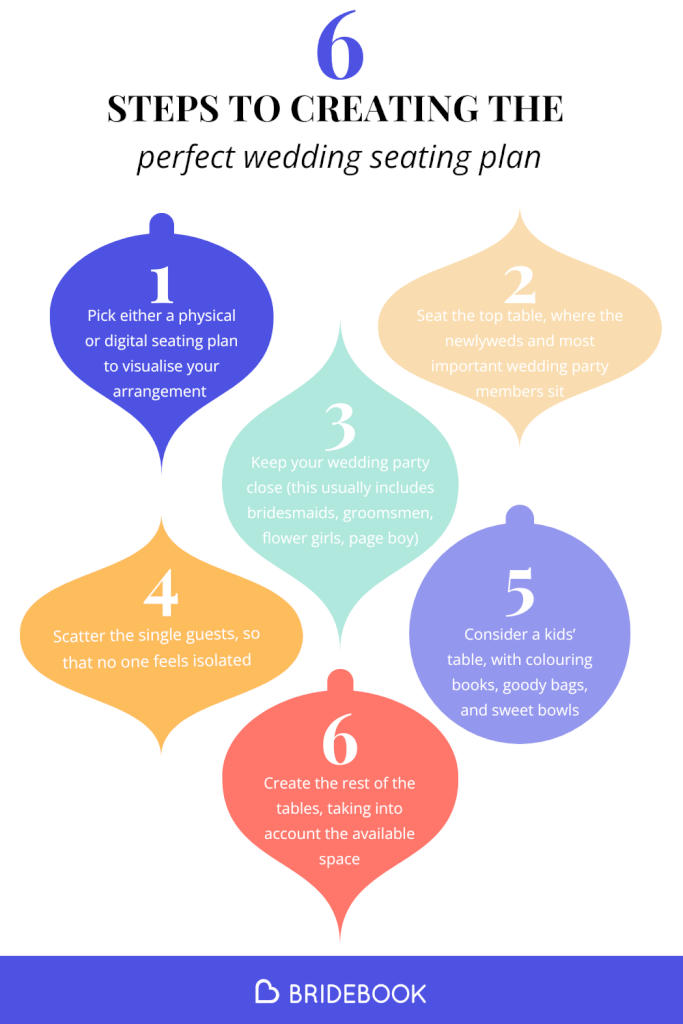
1) Pick either a physical or digital seating plan
Wedding table planning can be either physical or digital.
- If you prefer a physical planning tool, grab some poster board, sticky notes, and a few colourful markers. Using sticky notes means you can easily move guests around until you find the perfect arrangement. Plus, it’s a fun, hands-on way to visualise your seating plan.
- If digital is more your style, you can create a simple spreadsheet. This method is great for making quick adjustments, sorting guests, and easily sharing the plan with others involved in the planning process. Plus, you can use different colours and tabs to organise groups and tables effectively.
2) Seat the top table first
We recommend you start with the top table when creating your wedding seating plan. The top table is the focal point of the wedding reception and is usually where the newlyweds, their families, and some of the wedding party sit. Top tables come in all shapes and sizes, so decide what arrangement works best for you. Whether it’s a long rectangular table, a sweetheart table, or even if you’d rather have a ‘musical chairs’ style top table, planning your top table first will give you a jumping off point for the rest of your tables.
3) Keep your wedding party close
Once you’ve determined who’s sitting at your top table, the second table you plan should be the wedding party. If you’re having a lot of bridesmaids and groomsmen, plus flower girls and a page boy, it may be difficult to sit them all at the top table. However, you should try to keep them close so they can easily fulfil their roles and be a part of the main action. Position their tables nearby so they can feel included and smooth things over as needed.
4) Scatter the single guests
If you aren’t extending ‘plus-ones’ to your single guests, it’s a good idea to scatter the singles throughout your wedding tables. It takes confidence to come to a wedding alone, and creating a singles table can make people feel isolated. Instead, mix them in with other guests where they can meet new people and be part of the fun.
5) Consider a kids’ table
Sitting all the kids together is a cute and practical idea. Try setting up a special kids’ table with colouring books, goody bags and sweet bowls, and serve kid-friendly food like pasta or chicken nuggets. This way, the little ones can enjoy themselves and make new friends while the parents relax. Plus, it helps keep the noise and chaos contained to one area, making it easier for everyone to have a good time.
6) Create the rest of the tables
Once you’ve planned your top table, wedding party, and decided how you’ll seat singles and kids, you can begin planning the rest of the tables.
It’s a good idea to group guests thoughtfully based on who gets along well and who might enjoy each other’s company. Think about common interests, friendships, and family connections. Try seating a few people from each group together to ensure people feel comfortable, and keep families and couples together wherever possible.
You should also try to balance the tables so there’s a good mix of personalities, which can lead to lively and enjoyable conversations. Sit shy people with kind, outgoing people to help bring them out of their shell, and seat the party animals together so they can enjoy themselves without overwhelming the quieter guests.
Equally, if there are any ongoing family feuds or current friendship fallouts, it’s best to seat them separately to avoid arguments.
Top tips for a successful wedding table plan
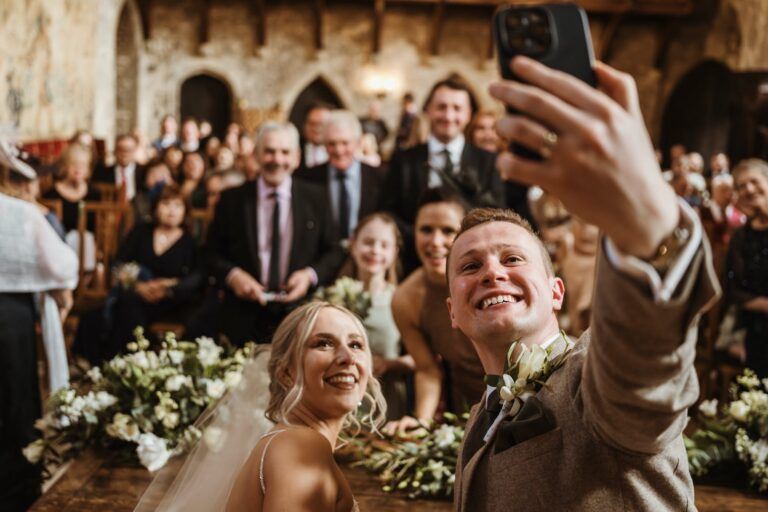
Don’t forget these top tips when planning your wedding seating plan!
1) Use coloured Post-it notes
If you’re creating a physical wedding seating plan, using coloured Post-it notes can help you outline your seating plan before you commit it with markers. Assign different colours to various groups (such as family, friends, and work colleagues) to make it easy to see who’s sitting where and to move people around as needed.
2) Start early
As soon as you receive an RSVP, pop the guests on your table plan. You can, of course, move them around once you receive more RSVPs. However, putting guests on your table plan as soon as they’ve confirmed they’re coming will help you stay organised and reduce last minute stress.
3) Consider accessibility
Consider accessibility and the needs of your guests when planning your wedding seating plan. For example, don’t seat guests in a wheelchair all the way at the back, don’t seat those who wear hearing aids in the centre of a busy table, and seat parents within eyesight of the kids’ table for their peace of mind.
4) Be flexible
Fallouts happen, and last-minute changes are sometimes unavoidable. Be prepared to adjust your seating plan if necessary. Having a flexible mindset will help you handle any changes smoothly and make sure everyone is comfortable.
Frequently Asked Questions
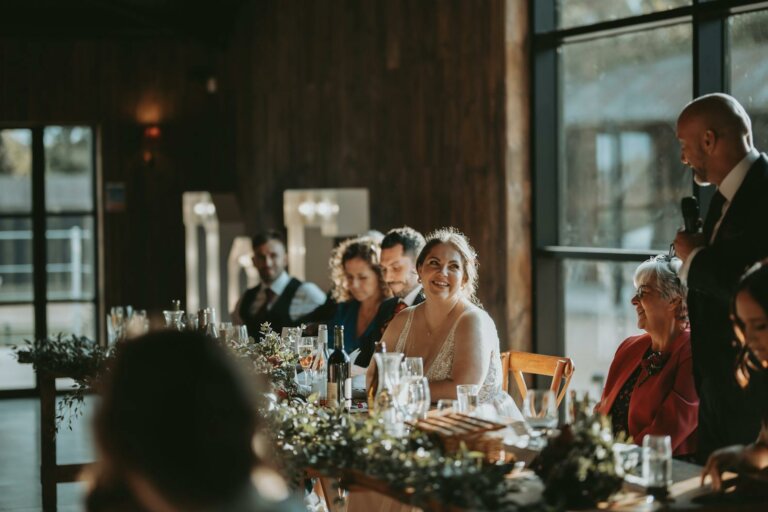
1) Do you put surnames on a wedding seating plan?
You don’t have to, but it can help guests with common names differentiate between themselves and other guests. For example, if you have 3 Chloes attending, or 2 Jacks, including their surname can avoid confusion and ensure everyone finds their seat easily. It can also give an air of formality to your wedding seating plan, so go ahead and include them if you’re going for a high-brow affair.
2) Where do the bride and groom sit at a wedding reception?
The bride and groom typically sit on the top table during a wedding reception. However, the most important thing is that you do what feels right to you and your spouse. If that means sitting with all your guests to avoid FOMO — do it!
3) Do the parents of the bride and groom sit together?
The bride’s partners will usually sit at the top table next to the bride, while the groom’s parents will sit next to the groom. But, again, this is your day, and we appreciate that everyone’s family has a different dynamic. If your parents are divorced, have remarried, and you’d prefer to have your grandparents at the top table, that’s fine. Do whatever works for you on your special day!
4) Is there an app to create a guest list?
You can use our free Bridebook app to create a handy guest list for your wedding seating plan. It’s easy to add guests, plus-ones, and notes for each guest. You can also differentiate between day and night guests, as well as track RSVPs and meal choices. Sign up for free today!
The bottom line on wedding seating plans
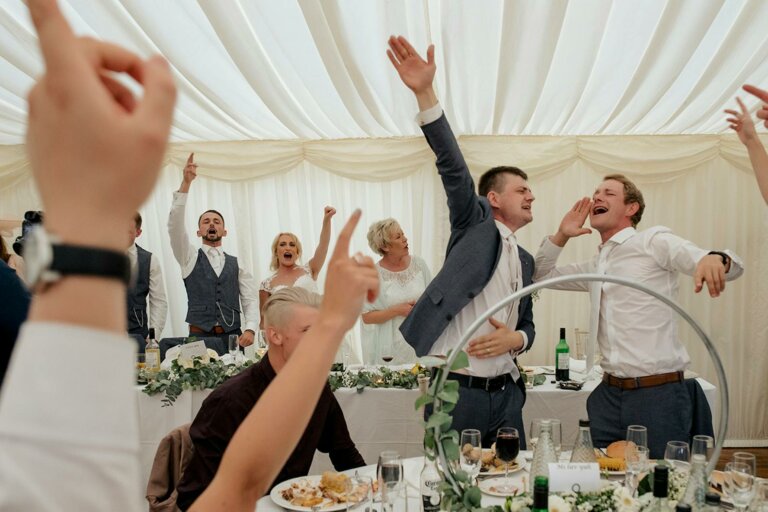
Wedding seating plans are key to helping your guests find their seats during your wedding reception. By taking the time to thoughtfully arrange your seating, you can make sure everyone has a great time and feels comfortable. Remember to start early, be flexible, and consider the needs and relationships of your guests.
The goal is to make your wedding reception an enjoyable experience for everyone, and helping your guests quickly find their seats is part of that. Whether you use a physical or digital plan, the most important thing is that planning is fun and organised. Happy planning!
You Might Also Like…
- The Top Table: Who Sits Where at a Wedding?
- 28 Best Wedding Seating Plan Ideas
- Top 40 Wedding Table Decoration Ideas
- Top 70 DIY Wedding Decoration Ideas
- 52 Best Wedding Centrepiece Ideas
- 15 Wedding Decoration Ideas
Happy Planning!

